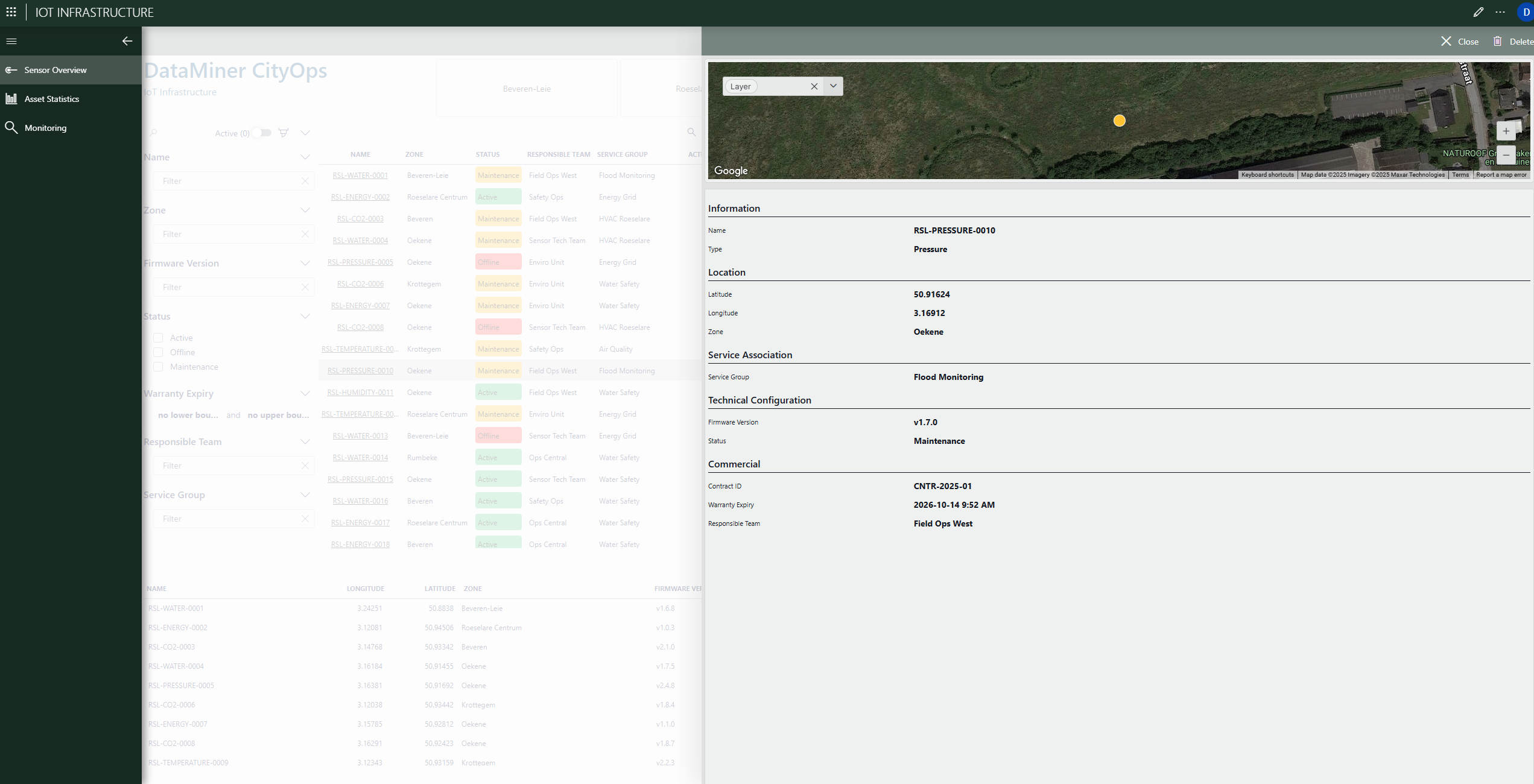solution Use Case
DataMiner CityOps IoT Infrastructure

Unifying IoT device management for smarter, more sustainable urban operations
Cities are becoming increasingly connected, with thousands of sensors and IoT devices generating vital data across utilities, energy grids, transportation systems, and public spaces. Managing this complex ecosystem requires more than simple monitoring tools. It demands a unified, intelligent platform capable of overseeing the full device lifecycle and ensuring continuous, reliable data flow to all operational domains. DataMiner CityOps IoT Infrastructure delivers exactly that.
This module serves as the foundation of a city’s connected operations, empowering teams to manage every sensor and IoT device with precision and confidence. It provides a comprehensive view of device health, connectivity, and lifecycle while integrating seamlessly with operational modules such as Maintenance and Asset Management.
As cities deploy thousands of connected devices across their infrastructure, managing their health and performance becomes increasingly difficult. Teams often struggle to identify which sensors are active, which require maintenance, or when warranties and service contracts are due to expire. Communication interruptions or outdated firmware can go unnoticed until they disrupt essential public services. Without predictive insights, device failures often occur before maintenance teams have the opportunity to intervene.
DataMiner CityOps IoT Infrastructure unifies the management of all connected devices within one intelligent environment. It automatically tracks operational status, last data transmission, communication quality, and firmware details to ensure continuous visibility of every device across the network.
USE CASE DETAILS
 The platform’s interactive dashboard provides a real-time citywide overview where each sensor’s status is clearly visualized on a map. Teams can instantly filter by zone, device type, responsible team, or service group to pinpoint issues and take action.
The platform’s interactive dashboard provides a real-time citywide overview where each sensor’s status is clearly visualized on a map. Teams can instantly filter by zone, device type, responsible team, or service group to pinpoint issues and take action.
 When selecting an individual sensor, DataMiner opens a detailed insight view displaying complete device metadata such as location, firmware version, contract ID, warranty period, and responsible team. This detailed view ensures that every device is fully contextualized within its operational environment.
When selecting an individual sensor, DataMiner opens a detailed insight view displaying complete device metadata such as location, firmware version, contract ID, warranty period, and responsible team. This detailed view ensures that every device is fully contextualized within its operational environment.
 On the right, the detailed configuration panel opens for any selected sensor. Here, operators can view and edit attributes such as device type, geographic coordinates, service group, firmware version, operational status, contract ID, warranty expiry date, and assigned maintenance team.
On the right, the detailed configuration panel opens for any selected sensor. Here, operators can view and edit attributes such as device type, geographic coordinates, service group, firmware version, operational status, contract ID, warranty expiry date, and assigned maintenance team.
 The analytics dashboards visualize trends in device distribution, operational status, and performance across service groups. They allow operators to identify problem clusters, compare performance between zones, and measure the effectiveness of interventions. These insights are crucial for anticipating maintenance needs and optimizing resource planning.
The analytics dashboards visualize trends in device distribution, operational status, and performance across service groups. They allow operators to identify problem clusters, compare performance between zones, and measure the effectiveness of interventions. These insights are crucial for anticipating maintenance needs and optimizing resource planning.
 The infrastructure monitoring workspace provides automated tracking of warranty expirations, offline devices, and assets under maintenance. It centralizes operational priorities, helping teams proactively address upcoming risks before they affect service continuity.
The infrastructure monitoring workspace provides automated tracking of warranty expirations, offline devices, and assets under maintenance. It centralizes operational priorities, helping teams proactively address upcoming risks before they affect service continuity.Conclusion
Through these core functions, DataMiner CityOps IoT Infrastructure transforms IoT device management from a reactive process into a predictive, data-driven discipline. It brings together the operational, maintenance, and asset management layers into one fully integrated workflow.
DataMiner CityOps IoT Infrastructure enables municipalities to build more resilient and efficient connected environments. It helps reduce downtime through proactive maintenance planning, optimizes resource allocation across operational teams, and ensures that every sensor continues to deliver accurate data throughout its lifecycle. Cities gain complete transparency over their IoT assets, from battery life and communication reliability to warranty coverage and service history.
The result is a smarter, more dependable IoT ecosystem that strengthens data-driven decision-making, enhances operational efficiency, and supports sustainable city growth.